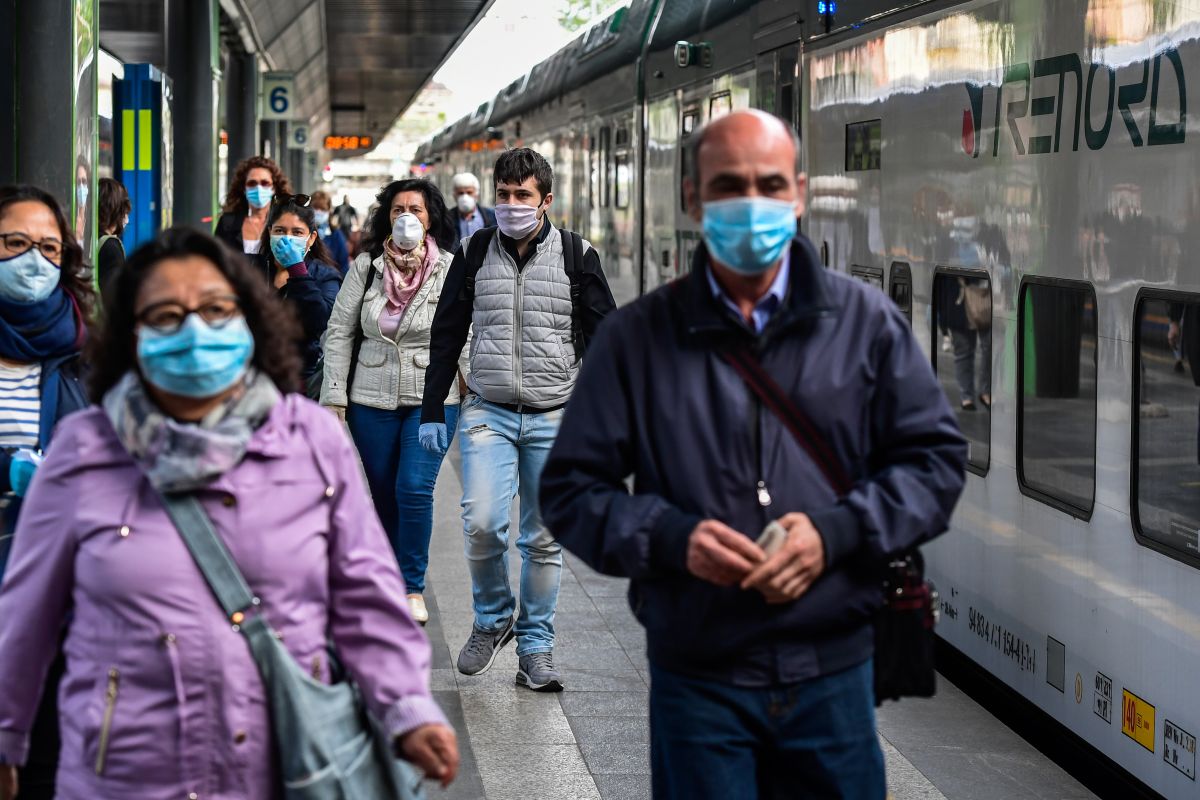Europe’s hardest-hit country,Italy eases back the world’s longest nationwide coronavirus lockdown on Monday. Four million people will return to their construction sites and factories as the economically and emotionally shattered country tries to get back to work.
Restaurants that have managed to survive Italy’s most disastrous crisis in generations will reopen for takeaway service. But bars and even ice cream parlours will remain shut. The use of public transport will be discouraged and everyone will have to wear masks in indoor public spaces.
Advertisement
“We are feeling a mix of joy and fear,” 40-year-old Stefano Milano said in Rome.
“There will be great happiness in being able to go running again carefree, in my son being allowed to have his little cousin over to blow out his birthday candles, to see our parents,” the father-of-three said.
“But we are also apprehensive because they are old and my father-in-law has cancer so is high risk”.
Wuhan, the Chinese city where the virus emerged in December, led the world with an unprecedented lockdown on January 23 that lasted 76 days.
Weeks later Italy followed suit, becoming the first Western democracy to shut down virtually everything in the face of an illness that has now officially killed 28,884 — the most in Europe — and some fear thousands more.
The lives of Italians began closing in around them as it became increasingly apparent that the first batch of infections in provinces around Milan were spiralling out of control.
Prime Minister Giuseppe Conte began by putting a quarter of the population in the northern industrial heartland on lockdown on March 8.
The sudden measure frightened many — fearful of being locked in together with the gathering threat, into fleeing to less affected regions further south.
The danger of the virus spreading with them and incapacitating the south’s less developed health care system forced Conte to announce a nationwide lockdown on March 9.
The official death toll was then 724. More waves of restrictions followed as hundreds began dying each day. Almost everything except for pharmacies and grocery stores was shuttered across the Mediterranean country of 60 million on March 12. The total number of Italians infected by the virus is 210,717 and the death toll is at 28,884 according to Johns Hopkins University.
Conte’s final roll of the dice involved closing all non-essential factories on March 22. Italy’s highest single toll, 969, was reported five days later.
The economic toll of all those shutdowns has been historic. Italy’s economy — the eurozone’s third-largest last year — is expected to shrink more than in any year since the global depression of the 1930s.
Half of the workforce is receiving state support and the same number told a top pollster that they were afraid of becoming unemployed.
And some of those who are out of a job already say they do not entirely trust in Conte’s ability to safely navigate the nation out of peril.
“I am worried about the reopening. The authorities seem very undecided about how to proceed,” 37-year-old Davide Napoleoni told AFP.
Conte’s popularity has jumped along with that of most of other world leaders grappling with the pandemic thanks to a rally around the flag effect.
But a Demos poll conducted at the end of April found some of Conte’s lustre fading. Confidence in his government has slipped by eight percentage points to a still-strong 63 percent since March.
Italy’s staggered reopening is complicated by a highly decentralised system that allows the country’s 20 regions to layer on their own rules.
Venice’s Veneto and the southern Calabria regions have thus been serving food and drink at bars and restaurants with outdoor seating since last week.
The area around Genoa is thinking of allowing small groups of people to go sailing and reopening its beaches. Neighbouring Emilia-Romagna is keeping them closed, even to those who live by the sea. All this uncertainty appears to be weighing on the nation’s psyche.
A poll by the Piepoli Institute showed 62 percent of Italians think they will need psychological support with coming to grips with the post-lockdown world. “The night of the virus continues,” sociologist Ilvo Diamanti wrote in La Repubblica daily. “And you can hardly see the light on the horizon. If anything, we’re getting used to moving in the dark.”











